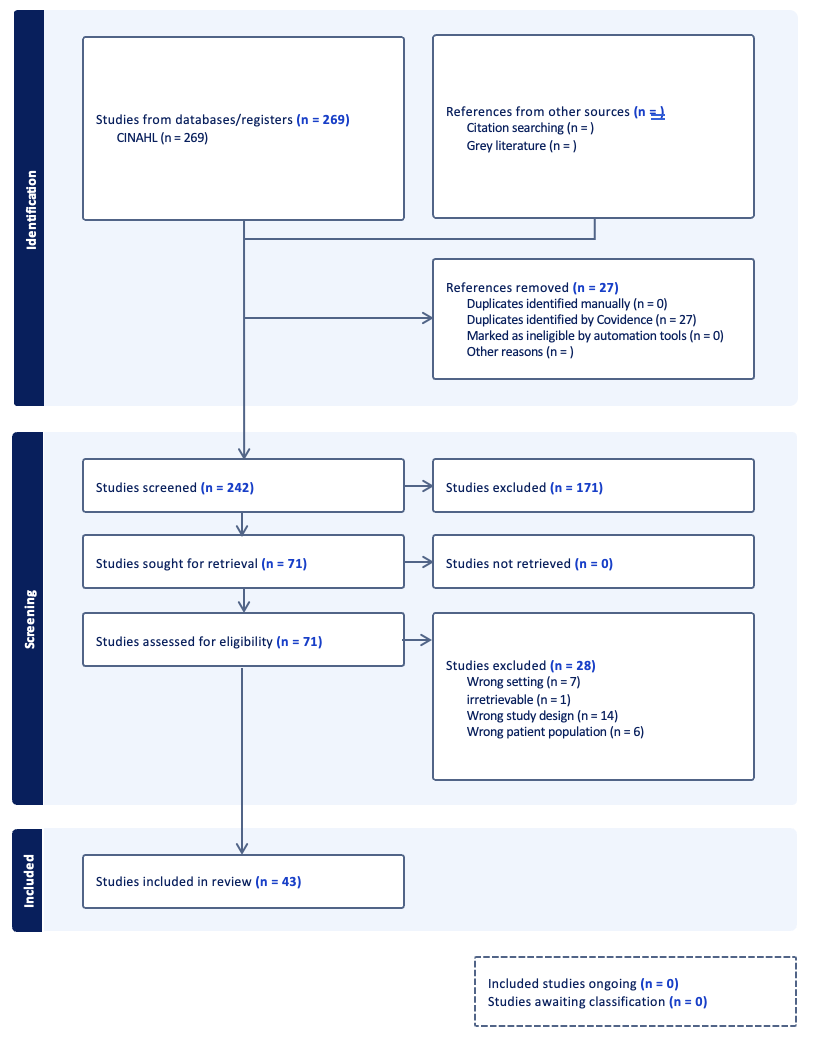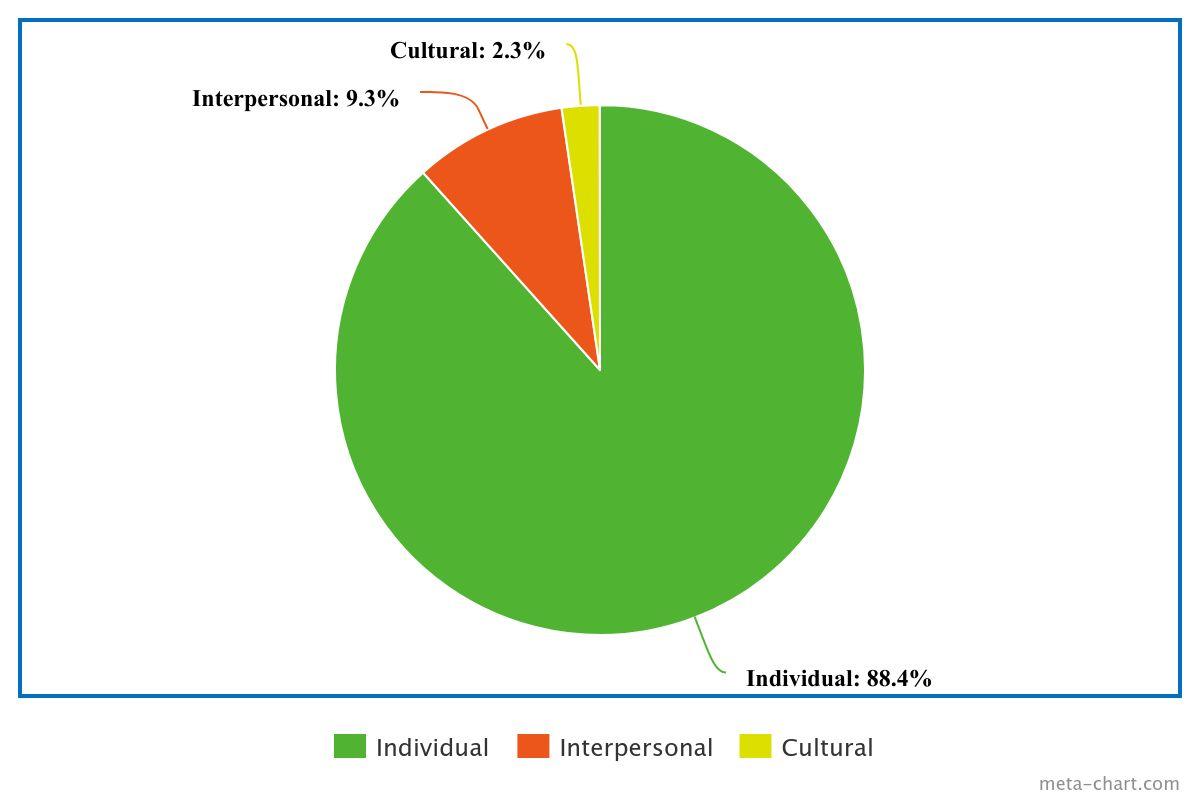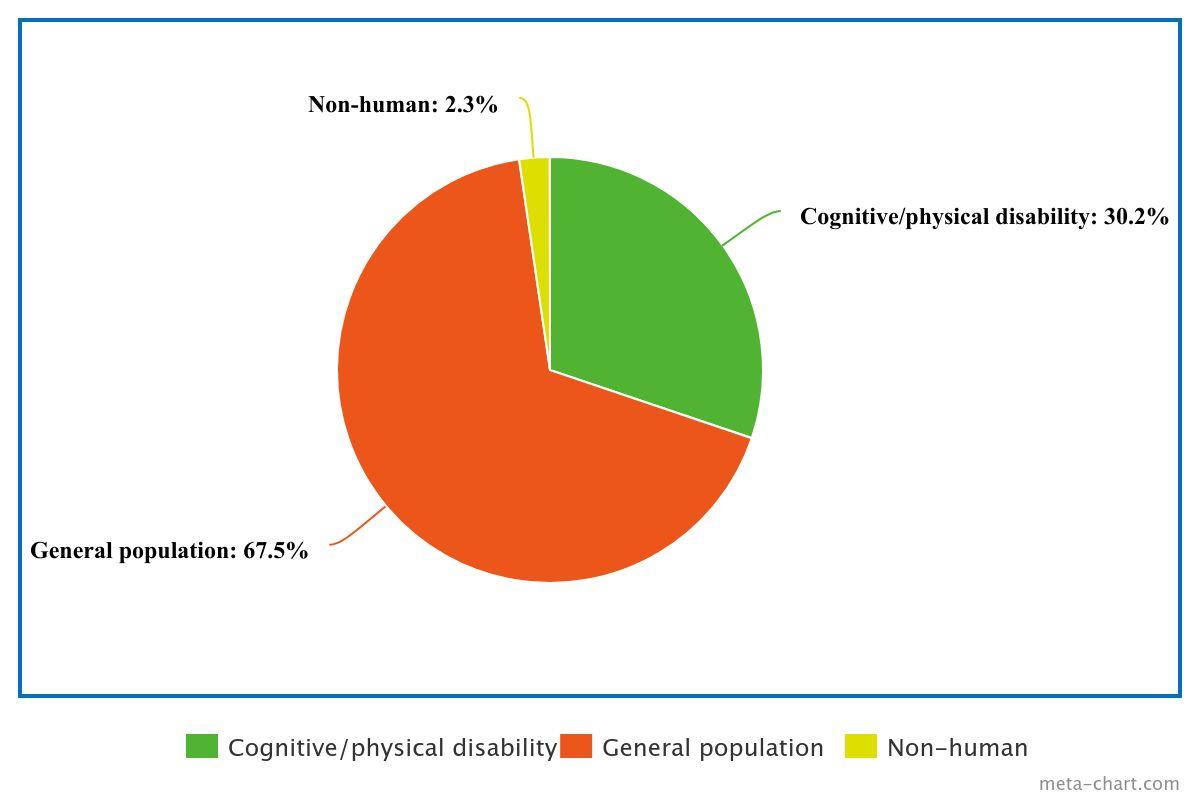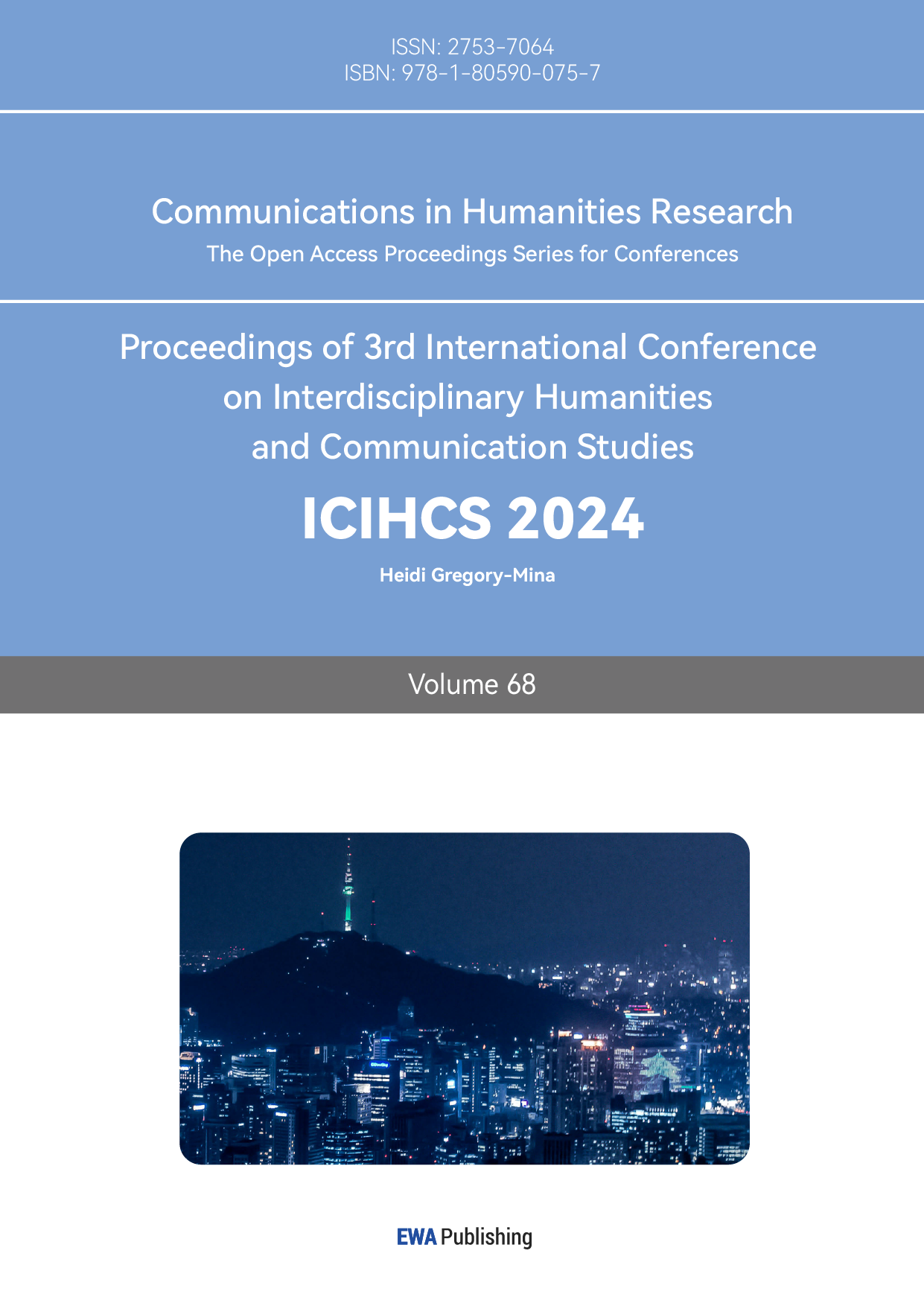1. Introduction
Sleep deprivation is a problem now commonly seen in adolescents [1]. The lack of rest could affect academic performance, educational intuition, cognitive development, and abilities [2]. The exploration of the neuroscience behind high school-aged students' relationships, sleep patterns, and language learning ability has come to our attention in language educational research. Educational research has explored the neuroscience behind toddlers', children's, and adults' relationships, sleep patterns, and language learning. It has emphasized the effect of sleep deprivation on cognitive development and language skills. However, there still remains a need to examine how sleep deprivation influences language learning in adolescents, and whilst a robust body of scholarship on the correlation between language learning and sleep exists, barely any systematic reviews help draw the landscape of the existing scholarship. Our paper addresses this gap by systematically analyzing recent studies exploring the connection between sleep and language learning from a neuroscientific perspective. By uncovering prevailing themes and theoretical assumptions in the existing research, we aim to understand what areas need further exploration. In particular, we are interested in investigating how the existing research situations sleep within a broader cultural context. To this end, our research asks:
1. What trends and patterns exist in current research that discusses the relationship between sleep and language learning?
2. To what extent do these studies integrate findings from a social perspective to inform educational practices and interventions aimed at enhancing language learning through better sleep management?
3. To what extent do current studies focus on the population of adolescents to enhance language learning through better sleep management?
2. Theoretical framework
Our analysis draws on the biopsychosocial model first proposed and created by George Engel and expanded upon by more recent scholars [3-5]. The biopsychosocial model is an interdisciplinary framework that posits that health and development are the result of the interplay between 3 factors: biological, psychological, and social. This holistic framework is in particular useful when it comes to understanding complex phenomena like language development and acquisition, where multiple factors interact over time whilst being able to interrelate the biological and neurological processes that occur during sleep. Based on this model, we can view our research from three different perspectives: Biological (Cognitive/physical disabilities), psychological (the phenomenon of language learning), and social (the cultural context and settings where the learning occurs).
A example of recent expansion of this model include: Advancing a Biopsychosocial and Contextual Model of Sleep in Adolescence [6], identifying missing areas as well as strengthening the model as a whole through the multitudal surveying of sleep in adolescence.
3. Method
Our team conducted a systematic review to ensure a comprehensive and unbaised collection of studies. EBSCOhost, a versatile platform encompassing multiple databases, was utilized due to its extensive coverage of literature. To effectively capture all pertinent studies, a robust combination of search terms and Boolean operators (AND, OR) was employed. Search terms were identified based on the main concepts of the research question (see Table 1). The initial search resulted in 242 articles, and 27 duplicates were removed.
Table 1: Examples of search terms used in EBSCO database
Search Term Category (Joined with AND) | Search Terms in Abstract (Joined with OR) |
Sleep | “sleep*” OR “circadia*” OR “slumber*” |
Pressure | “language learn*” OR “language profile*” OR “bilingual*” OR “multilingual*” OR “language develop*” OR “language acquisit*” OR “acquire language” OR “acquires language” OR “linguistic develop*” OR “fluency attain*” OR “attain fluency” OR “language educat*” OR “linguistic growth” OR “language growth” OR “communicative competence*” OR “language competence*” |
For the first screening process, two independent reviewers conducted a preliminary title and abstract screening. Articles were excluded if they did not meet the inclusion criteria. In cases of ambiguity or screener disagreement, articles were discussed by multiple reviewers in order to ensure the reliability of our information. Remaining articles underwent a full-text review. The same reviewers independently assessed each article against the criteria of inclusion and exclusion (see Table 2). Screening discrepancies were resolved through discussion.
Table 2: Inclusion/exclusion criteria
Key aspects | Inclusion | Exclusion |
Language of journal | English/Chinese/Spanish/French | In other languages |
Sleep patterns | About sleep patterns | Not about sleep patterns |
Language Learning | About language learning | Not about language learning |
Accessibility | Retrievable | Irretrievable |
Following the full-text screening,we determined whether the research establishes a clear connection between sleep and language learning. We then sorted the studies into three groups to help us better delve into the analysis based on the theoretical framework: age, population characteristics (bio), and level of analysis (social). For the age groups, we patronized into four small groups: Early Childhood (below age 5), Children (before puberty), Adolescence (puberty to adulthood), and Adulthood. Next, we categorized the 'level of analysis' into Individual, Interpersonal, and Cultural groups. Individual analysis focuses on the learners, examining factors such as sleep patterns, cognitive functions, and language acquisition on a personal level. Interpersonal analysis includes the micro and mesosystems, referring to interactions within immediate settings like classrooms and homes, focusing on relationships, teacher-student interactions, and family influences. Cultural analysis encompasses the exo and macrosystems, indicating broader influences such as societal attitudes towards sleep and education, educational policies, and cultural norms regarding sleep habits. Additionally, we categorized 'Population Characteristics' into two groups: General Population and those with Cognitive or Physical Disabilities.

Figure 1: Prisma diagram
Table 3: Overview of study characteristics
Study | Author, Date | Age | Population Characteristics | Level of Analysis |
The right hemisphere of sleeping infant perceives sentential prosody | Home 2006 | Early Childhood (Under 5 years old) | General Population | Individual |
The influence of sleep on language production modalities in preschool children with Down syndrome. | Arias‐Trejo 2021 | Early Childhood (Under 5 years old) | Cognitive or Physical Disability | Individual |
The effect of sleep on novel word learning in healthy adults: A systematic review and meta-analysis. | Schimke 2021 | Adulthood | General Population | Individual |
The beneficial role of memory reactivation for language learning during sleep: A review. | Schreiner 2017 | Adulthood | General Population | Individual |
Systematic Review of the Effects of Sleep on Memory and Word Learning in Infancy | Belia 2023 | Early Childhood (Under 5 years old) | General Population | Individual |
Sustained Attention across Toddlerhood: The Roles of Language and Sleep | McQuillan 2021 | Early Childhood (Under 5 years old) | General Population | Individual |
Sulthiame Therapy for Continuous Spike and Wave in Slow-Wave Sleep | Wirrell 2006 | Childhood (Pre-puberty) | Cognitive or Physical Disability | Individual |
Spectral-temporal EEG dynamics of speech discrimination processing in infants during sleep. | Gilley 2017 | Early Childhood (Under 5 years old) | General Population | Individual |
Something Old, Something New: A Review of the Literature on Sleep-Related Lexicalization of Novel Words in Adults | Palma 2021 | Adulthood | General Population | Individual |
Sleep-Driven Computations in Speech Processing. | Frost 2017 | Adulthood | General Population | Individual |
Sleep-Dependent Consolidation of Second Language Grammar Knowledge: The Role of Awareness | Kim 2020 | Adulthood | General Population | Individual |
Sleep-dependent consolidation effects on foreign language word acquisition in a virtual reality environment. | Liu 2024 | Adolescence (Puberty to Adulthood) | General Population | Individual |
Sleep-based memory processing facilitates grammatical generalization: Evidence from targeted memory reactivation. | Batterink 2017 | Adulthood | General Population | Individual |
Sleep, off-line processing, and vocal learning | Margoliash 2010 | Adulthood | Non-Human | Interpersonal |
Sleep Promotes Phonological Learning in Children across Language and Autism Spectra | Knowland 2019 | Childhood (Pre-puberty) | Cognitive or Physical Disability | Individual |
Sleep problems and language development in toddlers with Williams syndrome. | Axelsson 2013 | Early Childhood (Under 5 years old) | Cognitive or Physical Disability | Interpersonal |
Sleep Problem Screening of Young Children by Speech-Language Pathologists: A Mixed-Methods Feasibility Study | Bonuck 2021 | Early Childhood (Under 5 years old) | General Population | Individual |
Sleep Patterns and School Readiness of Pre-Kindergarteners from Racially and Ethnically Diverse, Low-Income Backgrounds. | Turnbull 2022 | Early Childhood (Under 5 years old) | General Population | Cultural |
Sleep facilitates learning a new linguistic rule. | Batterink 2014 | Adulthood | General Population | Individual |
Sleep Disturbance and Expressive Language Development in Preschool-Age Children with Down Syndrome | Edgin 2015 | Early Childhood (Under 5 years old) | Cognitive or Physical Disability | Individual |
Sleep Disorders as a Risk to Language Learning and Use. EBP Briefs. Volume 10, Issue 1 | Pearson 2015 | Adulthood | Cognitive or Physical Disability | Individual |
Sleep characteristics, early spontaneous movements, and developmental functioning in preterm infants in the early postnatal period. | Sırtbaş-Işık 2024 | Early Childhood (Under 5 years old) | General Population | Individual |
Sleep Behaviour Relates to Language Skills in Children with and without Communication Disorders | Botting 2018 | Childhood (Pre-puberty) | Cognitive or Physical Disability | Interpersonal |
Sleep and rest facilitate auditory learning | Gottselig 2004 | Adulthood | General Population | Individual |
Predictors of one-year language and seizure outcomes in children with epileptic encephalopathy with continuous spike-and-wave during sleep (CSWS). | Saraf 2020 | Childhood (Pre-puberty) | Cognitive or Physical Disability | Individual |
Parental reports of children's sleep and wakefulness: longitudinal associations with cognitive and language outcomes. | Dearing 2001 | Early Childhood (Under 5 years old) | General Population | Individual |
Novel word learning in older adults: A role for sleep? | Kurdziel 2017 | Adulthood | General Population | Individual |
Neuroscience and education: prime time to build the bridge. | Sigman 2014 | Early Childhood (Under 5 years old) | General Population | Individual |
Napping and Toddlers' Memory for Fast-Mapped Words | Axelsson 2018 | Early Childhood (Under 5 years old) | General Population | Individual |
Lateralized neonatal EEG coherence during sleep predicts language outcome. | Shellhaas 2022 | Early Childhood (Under 5 years old) | General Population | Individual |
Infant sleep behaviors relate to their later cognitive and language abilities and morning cortisol stress hormone levels. | Hernandez-Reif 2022 | Early Childhood (Under 5 years old) | General Population | Individual |
Immediate termination of electrical status epilepticus in sleep after hemispherotomy is associated with significant progress in language development. | Gröppel 2017 | Childhood (Pre-puberty) | Cognitive or Physical Disability | Individual |
Illustrations of interactions needed when investigating sleep using a type of AM-PM AM-PM design. | Mickes 2023 | Adulthood | General Population | Individual |
H - 61 Towards a Clinical-Cultural Neuropsychological Science: a Case Study of a Bilingual Spanish-Speaker with Untreated Sleep–Wake Disturbance. | Hernandez-Vallant 2023 | Adulthood | Cognitive or Physical Disability | Individual |
Functional Neuroimaging of Speech Perception during a Pivotal Period in Language Acquisition | Redcay 2008 | Early Childhood (Under 5 years old) | General Population | Individual |
From specific examples to general knowledge in language learning. | Tamminen 2015 | Adulthood | General Population | Individual |
Frequent Daytime Naps Predict Vocabulary Growth in Early Childhood | Horváth 2016 | Childhood (Pre-puberty) | General Population | Individual |
Epilepsy and Language Development: The Continuous Spike-Waves during Slow Sleep Syndrome. | Debiais 2007 | Childhood (Pre-puberty) | Cognitive or Physical Disability | Individual |
Does the Maturation of Early Sleep Patterns Predict Language Ability at School Entry? A Born in Bradford Study | Knowland 2022 | Childhood (Pre-puberty) | General Population | Individual |
Consolidation during sleep of perceptual learning of spoken language. | Fenn 2003 | Adulthood | General Population | Individual |
B-29 REM Sleep Behavior Disorder in Non-Demented Parkinson's Disease is Related to Poorer Cognitive Performance. | Mahmood 2019 | Adulthood | Cognitive or Physical Disability | Individual |
Atypicalities in Sleep and Semantic Consolidation in Autism | Fletcher 2020 | Childhood (Pre-puberty) | Cognitive or Physical Disability | Individual |
Associations between sleep-wake consolidation and language development in early childhood: a longitudinal twin study. | Dionne 2011 | Early Childhood (Under 5 years old) | General Population | Interpersonal |
4. Findings
Interested in how contemporary educational research investigates the relationship between sleep and language learning, we screened 242 studies. Among these, only 43 examined the impact of sleep on language learning across different age groups: childhood, adolescence, and adulthood. These studies also considered various population characteristics, including the general population and individuals with cognitive or physical disabilities, and analyzed individual, interpersonal, and cultural data. Based on our review, our analysis revealed a significant gap in the research. Most studies centered on toddlers, young children, and adults, leaving a critical gap in understanding the adolescent population. Furthermore, the level of analysis in the reviewed studies was predominantly individual, with social perspectives being notably underrepresented. This underscores a significant oversight in the research, as it fails to consider how social contexts might impact adolescent language learning. In the following paragraphs, we will dig deeper into these findings, exploring these gaps further.

Figure 2: Percentage of subject categorized by social factor

Figure 3: Percentage of subject categorized by biological factor
Upon preliminary categorization, it was found that the research landscape on the impact of sleep, and its affects on language learning is marked by a disproportionate focus on toddlers and young children when we analyzed the biological factors through our framework. Among the 43 studies reviewed, 26 concentrated on these younger age groups, with only one about adolescents; this creates a substantial gap in understanding the adolescent population. Adolescents at a critical stage of cognitive and linguistic development face unique challenges and needs that are largely neglected in the current body of research. This uneven focus fails to acknowledge that adolescence is a pivotal period for language acquisition [7], influenced by different developmental and social factors compared to early childhood. Addressing this gap is crucial to providing a comprehensive understanding of how sleep impacts language abilities and development across various stages of development. The lack of focus on adolescents also limits the applicability and relevance of the existing research to a broader population.
Possibly, our most intriguing finding is the relative absence of social-level analyses when looking at the socio perspective through the theoretical framework. Out of the 43 studies, only one addressed cultural factors about sleep and language learning, highlighting a significantly important oversight within the research framework [8]. This limitation constrains our understanding of how broader societal and cultural contexts might impact language learning among adolescents. Cultural or social influences can be crucial in shaping sleep patterns, language use, and learning environments [9]. By neglecting these factors, the existing research provides an incomplete picture of the interplay between sleep and language learning. Incorporating social-level analyses is essential to capture adolescents' diverse experiences and develop more inclusive and effective educational practices.
5. Conclusion
In conclusion, the current body of research on the impact of sleep deprivation on language learning is limited by its disproportionate focus on toddlers and children, a lack of adolescent-focused studies, and an underrepresentation of social perspectives. Addressing these gaps is essential to develop a more comprehensive understanding of how sleep influences language learning across different age groups and cultural contexts. Future research should prioritize adolescents and incorporate cultural/social-level analyses to provide more holistic insights and inform targeted interventions that cater to the diverse needs of learners.
Our findings regarding research on sleep and language learning offer a significant contribution to the field. The noticeable lack of research on adolescents and cultural effects suggests a critical shortcoming in the field’s empirical evidence supporting the efficacy of student's language learning work. Previous studies have focused on the impact of individual factors on language learning outcomes and have not focused on cultural and social influences, resulting in the latter being grossly underestimated [10]. Given the focus in research on individual-level factors, we worry that the field may only be developing solutions that focus on getting individuals to understand the importance of sleep for language learning, rather than how to actually improve upon sleep of individuals through a cultural and societal perspective. Future study should give priority to the population of adolescents and include more social-level analysis. Until further studies and action have been conducted, the current efficiency of students learning language at adolescence is questionable. As education evolves, the amount of sleep adolescents are receiving has significantly decreased. However, the need for language learning has increased, resulting in an inversely proportional trend. This phenomenon proposes an issue that requires immediate attention and action.
Acknowledgement
Sumyin Lo, Yufei Xiu, and Kaiying Ho contributed equally to this work and should be considered co-first authors.
References
[1]. Leger, D., Beck, F., Richard, J.-B., & Godeau, E. (2012). Total sleep time severely drops during adolescence. PLoS ONE, 7(10), e45204. https://doi.org/10.1371/journal.pone.0045204
[2]. Curcio, G., Ferrara, M., & De Gennaro, L. (2006). Sleep loss, learning capacity and academic performance. Sleep medicine reviews, 10(5), 323-337.
[3]. Engel, G. L. (1977). The need for a new medical model: a challenge for biomedicine. Science, 196(4286), 129-136.
[4]. Anderson, B. L. (2002). Biobehavioral outcomes following psychological interventions for cancer patients. Journal of Consulting and Clinical Psychology, 70, 590–610.
[5]. Smith, T. W., & Ruiz, J. M. (2002). Psychosocial influences on the development and course of coronary heart disease: Current status and implications for research and practice. Journal of Consulting and Clinical Psychology, 70, 548–568.
[6]. Becker, S. P., Langberg, J. M., & Byars, K. C. (2015). Advancing a Biopsychosocial and Contextual Model of Sleep in Adolescence: A Review and Introduction to the Special Issue. Journal of Youth and Adolescence, 44(2), 239–270. https://doi.org/10.1007/s10964-014-0248-y
[7]. Grimshaw, G. M., Adelstein, A., Bryden, M. P., & MacKinnon, G. E. (1998). First-language acquisition in adolescence: Evidence for a critical period for verbal language development. Brain and Language, 63(2), 237-255.
[8]. Turnbull, K. L. P., Cubides Mateus, D. M., LoCasale-Crouch, J., Lewin, D. S., & Williford, A. P. (2022). Sleep patterns and school readiness of prekindergarteners from racially and ethnically diverse, low-income backgrounds. The Journal of Pediatrics, 251. https://doi.org/10.1016/j.jpeds.2022.07.018
[9]. Jenni, O. G., & O'Connor, B. B. (2005). Children's sleep: an interplay between culture and biology. Pediatrics, 115(Supplement_1), 204-216.
[10]. Arias‐Trejo, N., Angulo‐Chavira, A. Q., Demara, B., Figueroa, C., & Edgin, J. (2020). The influence of sleep on language production modalities in preschool children with Down syndrome. Journal of Sleep Research, 30(3). https://doi.org/10.1111/jsr.13120
Cite this article
Lo,S.;Xiu,Y.;Ho,K. (2025). A Systematic Literature Review on Sleep and Language Learning: Surveying Existing Literature from a Biopsychosocial Perspective. Communications in Humanities Research,68,76-83.
Data availability
The datasets used and/or analyzed during the current study will be available from the authors upon reasonable request.
Disclaimer/Publisher's Note
The statements, opinions and data contained in all publications are solely those of the individual author(s) and contributor(s) and not of EWA Publishing and/or the editor(s). EWA Publishing and/or the editor(s) disclaim responsibility for any injury to people or property resulting from any ideas, methods, instructions or products referred to in the content.
About volume
Volume title: Proceedings of 3rd International Conference on Interdisciplinary Humanities and Communication Studies
© 2024 by the author(s). Licensee EWA Publishing, Oxford, UK. This article is an open access article distributed under the terms and
conditions of the Creative Commons Attribution (CC BY) license. Authors who
publish this series agree to the following terms:
1. Authors retain copyright and grant the series right of first publication with the work simultaneously licensed under a Creative Commons
Attribution License that allows others to share the work with an acknowledgment of the work's authorship and initial publication in this
series.
2. Authors are able to enter into separate, additional contractual arrangements for the non-exclusive distribution of the series's published
version of the work (e.g., post it to an institutional repository or publish it in a book), with an acknowledgment of its initial
publication in this series.
3. Authors are permitted and encouraged to post their work online (e.g., in institutional repositories or on their website) prior to and
during the submission process, as it can lead to productive exchanges, as well as earlier and greater citation of published work (See
Open access policy for details).
References
[1]. Leger, D., Beck, F., Richard, J.-B., & Godeau, E. (2012). Total sleep time severely drops during adolescence. PLoS ONE, 7(10), e45204. https://doi.org/10.1371/journal.pone.0045204
[2]. Curcio, G., Ferrara, M., & De Gennaro, L. (2006). Sleep loss, learning capacity and academic performance. Sleep medicine reviews, 10(5), 323-337.
[3]. Engel, G. L. (1977). The need for a new medical model: a challenge for biomedicine. Science, 196(4286), 129-136.
[4]. Anderson, B. L. (2002). Biobehavioral outcomes following psychological interventions for cancer patients. Journal of Consulting and Clinical Psychology, 70, 590–610.
[5]. Smith, T. W., & Ruiz, J. M. (2002). Psychosocial influences on the development and course of coronary heart disease: Current status and implications for research and practice. Journal of Consulting and Clinical Psychology, 70, 548–568.
[6]. Becker, S. P., Langberg, J. M., & Byars, K. C. (2015). Advancing a Biopsychosocial and Contextual Model of Sleep in Adolescence: A Review and Introduction to the Special Issue. Journal of Youth and Adolescence, 44(2), 239–270. https://doi.org/10.1007/s10964-014-0248-y
[7]. Grimshaw, G. M., Adelstein, A., Bryden, M. P., & MacKinnon, G. E. (1998). First-language acquisition in adolescence: Evidence for a critical period for verbal language development. Brain and Language, 63(2), 237-255.
[8]. Turnbull, K. L. P., Cubides Mateus, D. M., LoCasale-Crouch, J., Lewin, D. S., & Williford, A. P. (2022). Sleep patterns and school readiness of prekindergarteners from racially and ethnically diverse, low-income backgrounds. The Journal of Pediatrics, 251. https://doi.org/10.1016/j.jpeds.2022.07.018
[9]. Jenni, O. G., & O'Connor, B. B. (2005). Children's sleep: an interplay between culture and biology. Pediatrics, 115(Supplement_1), 204-216.
[10]. Arias‐Trejo, N., Angulo‐Chavira, A. Q., Demara, B., Figueroa, C., & Edgin, J. (2020). The influence of sleep on language production modalities in preschool children with Down syndrome. Journal of Sleep Research, 30(3). https://doi.org/10.1111/jsr.13120









